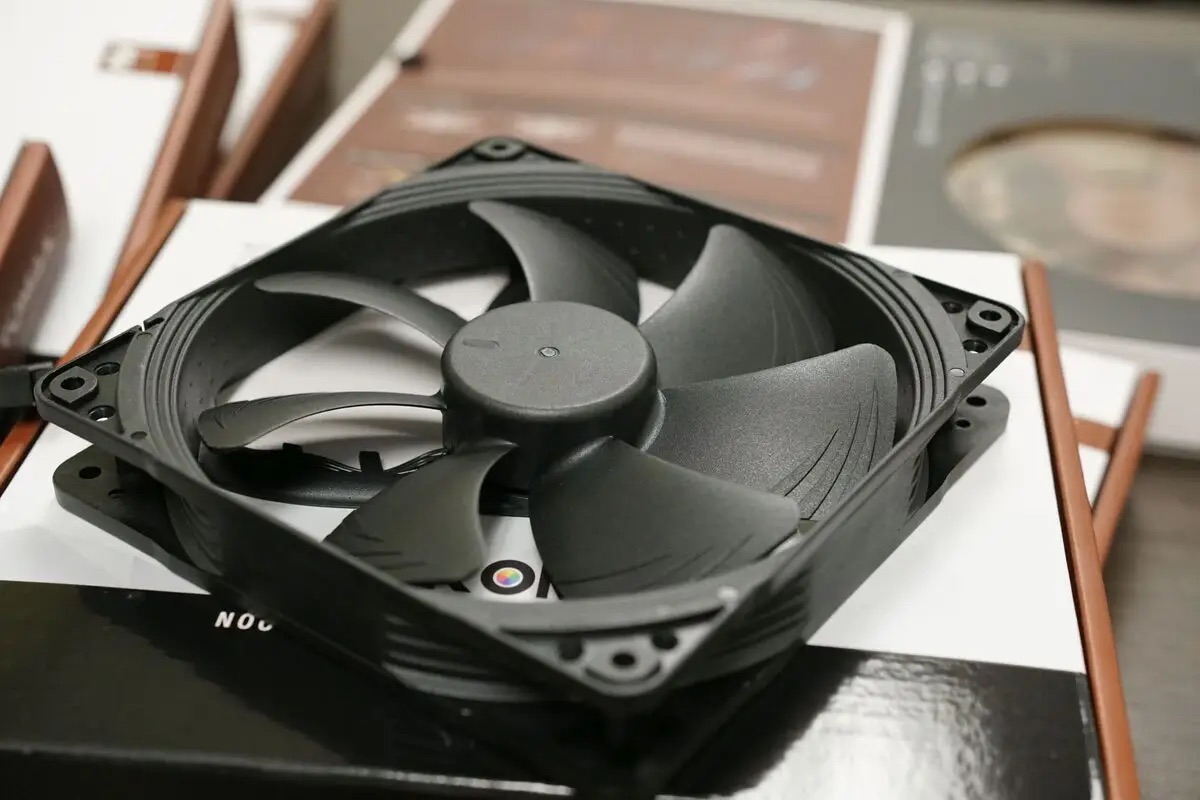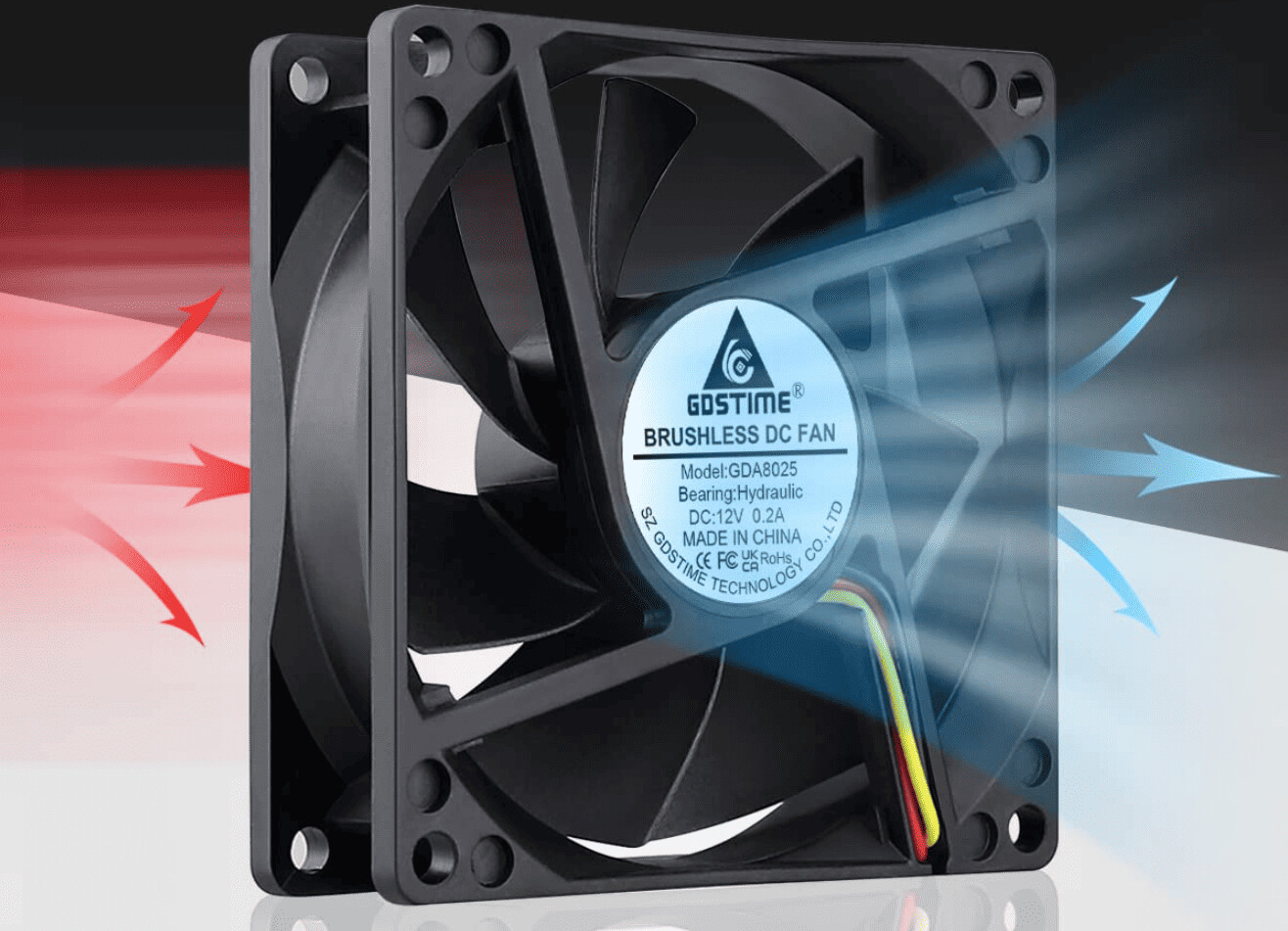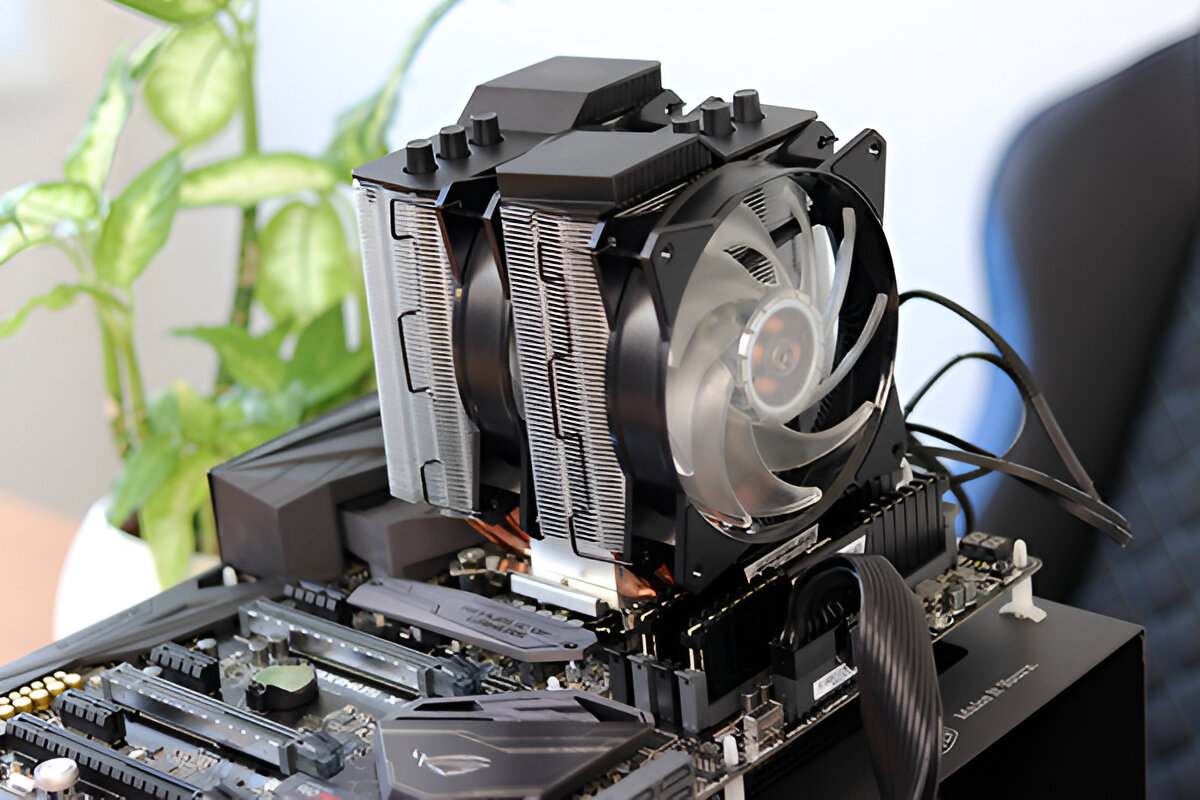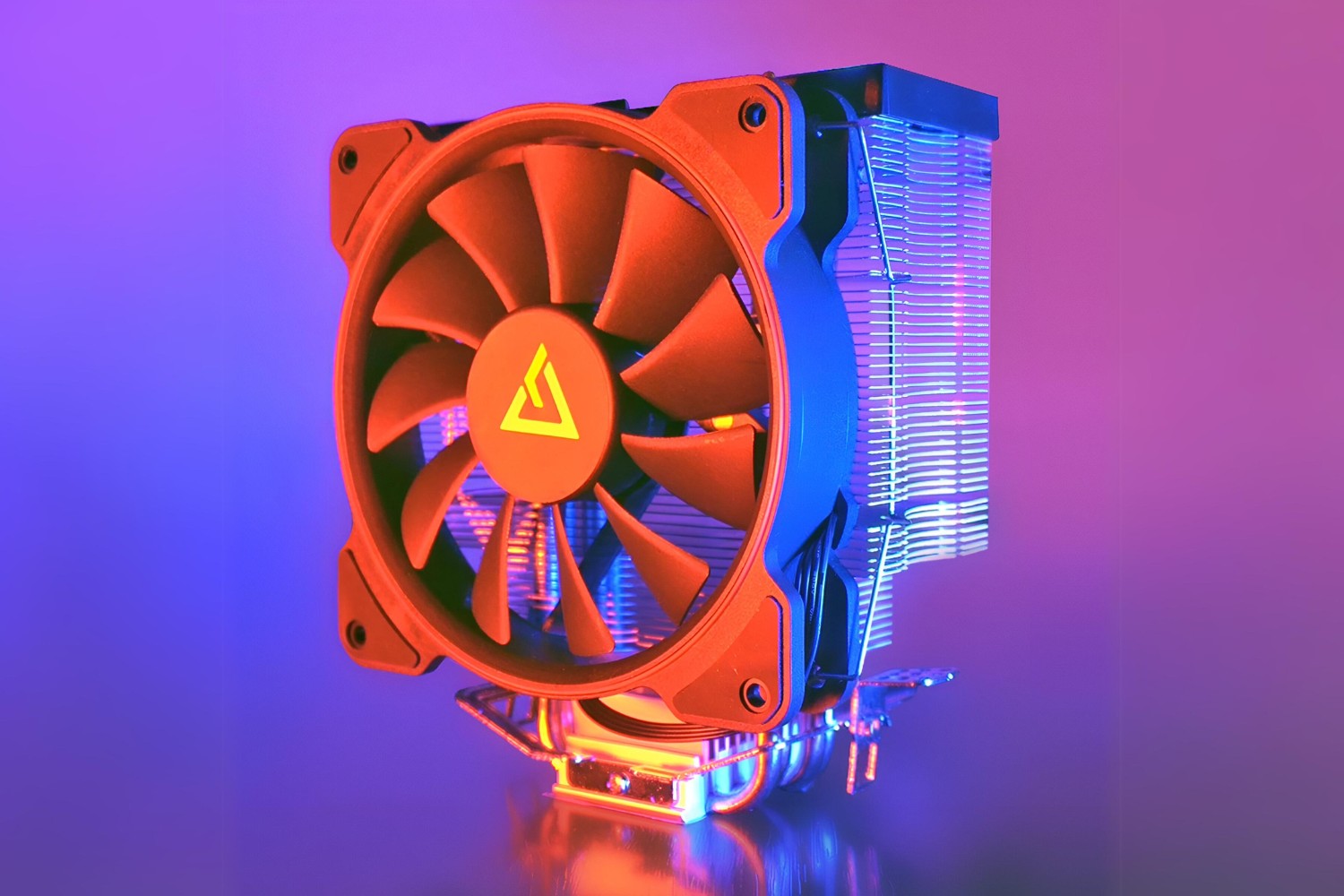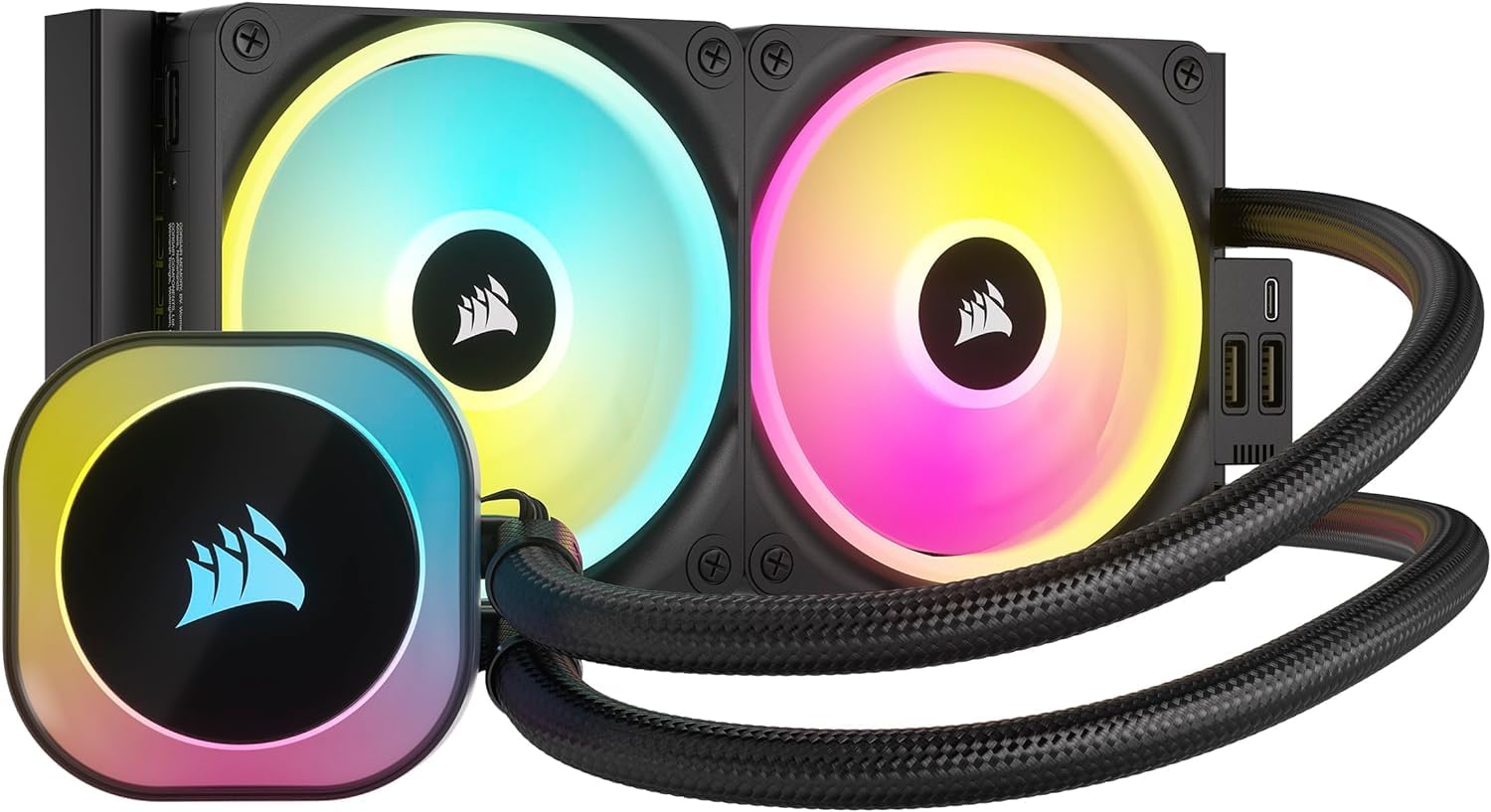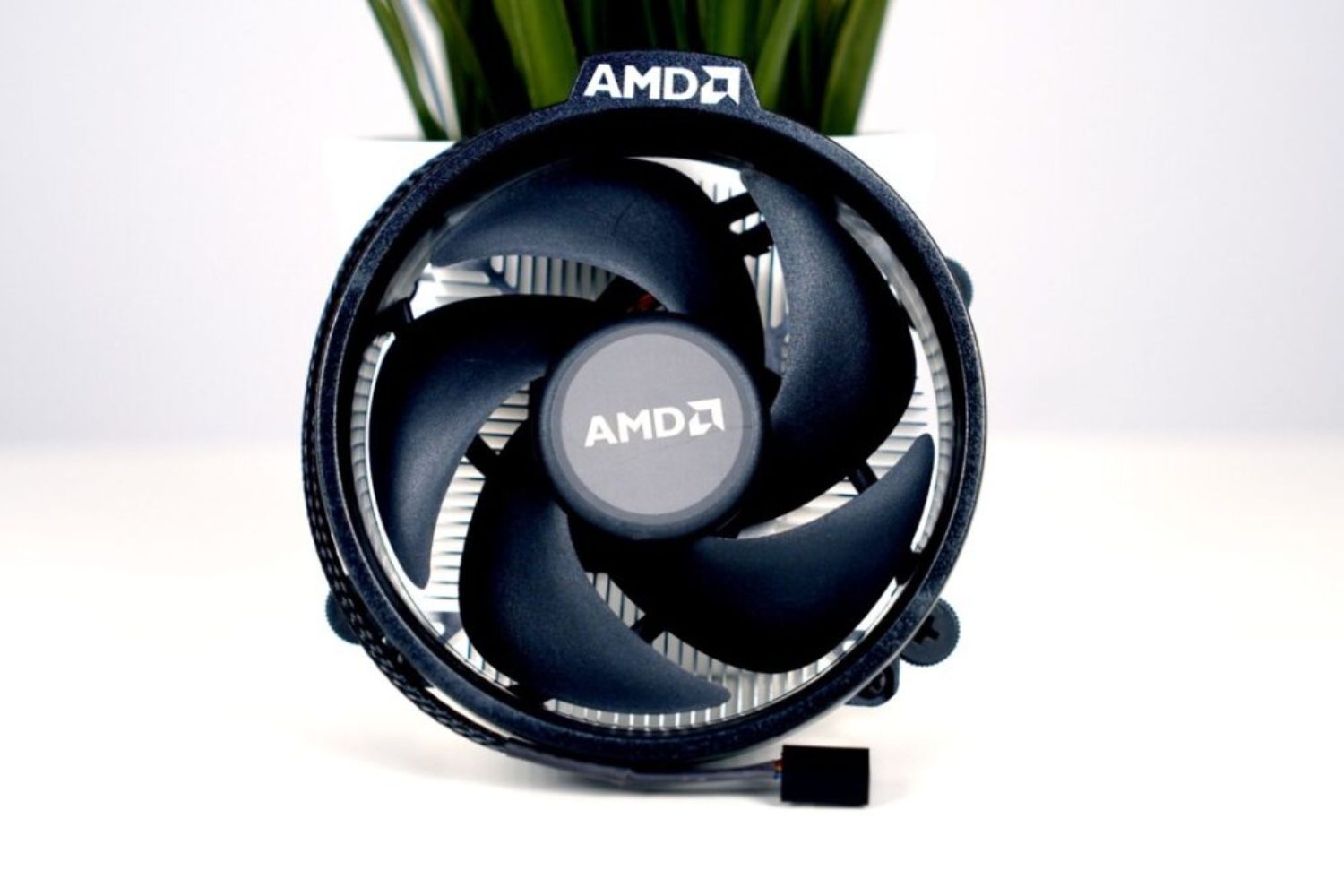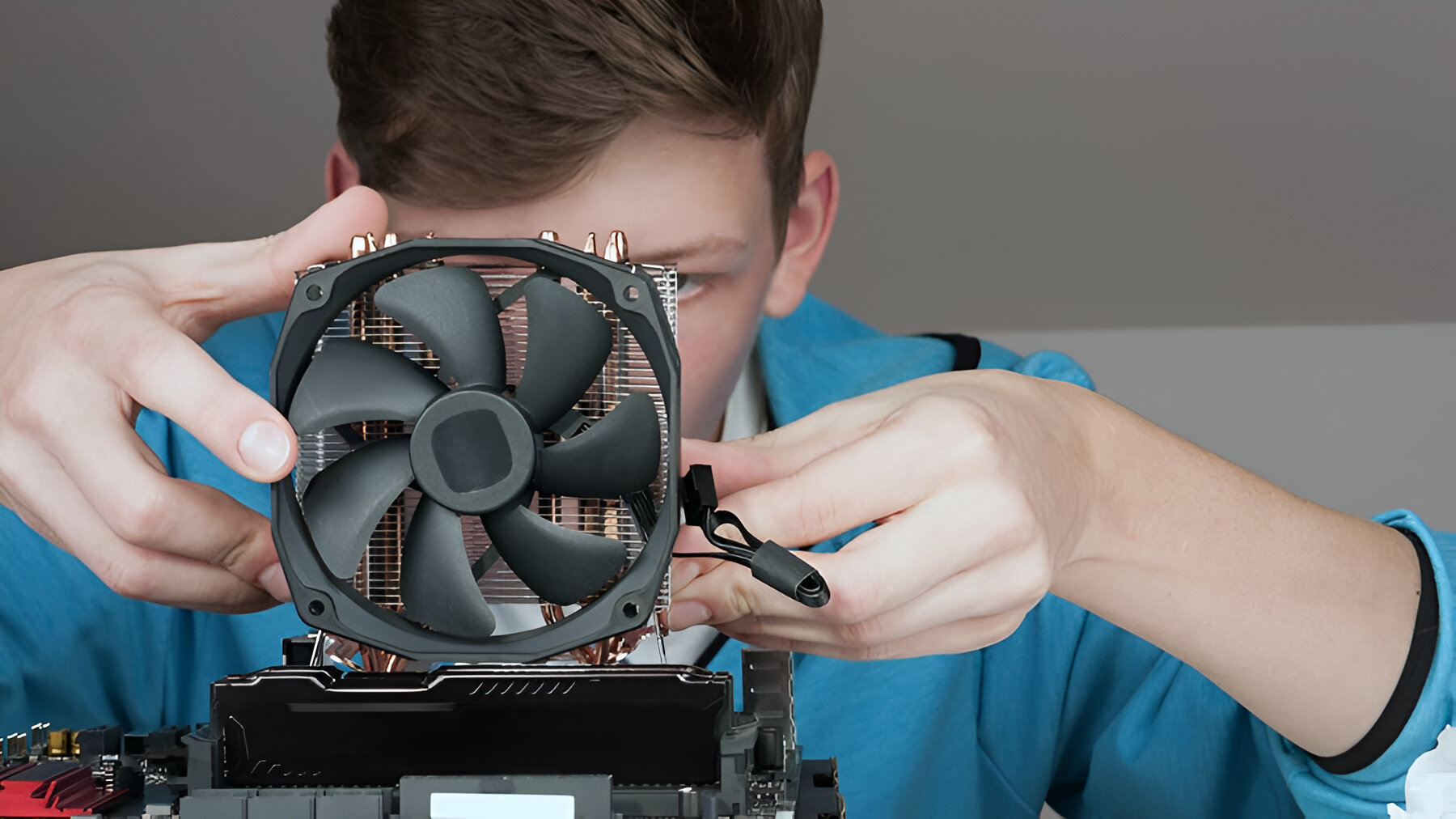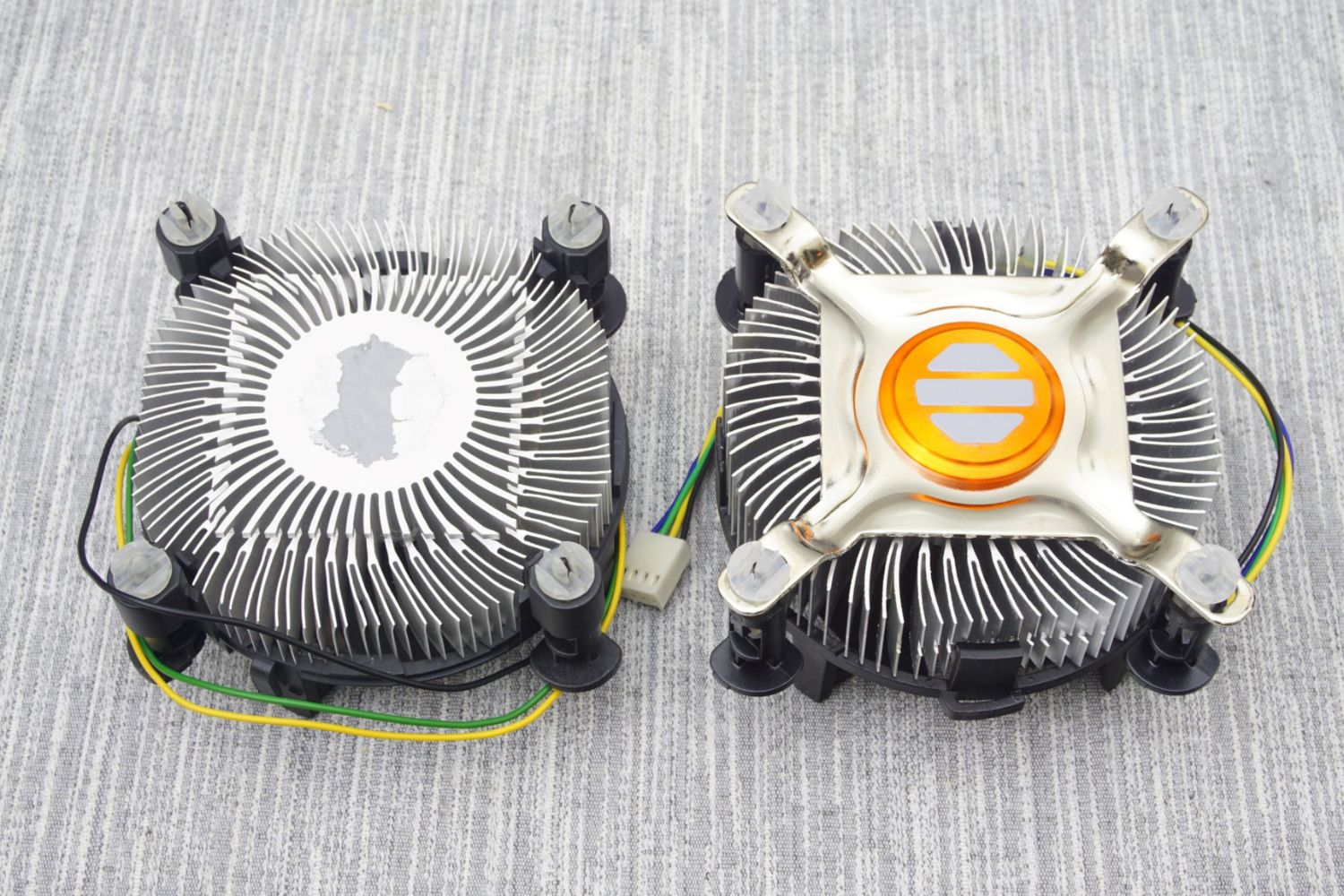Introduction
Welcome to the world of computer cooling! When it comes to keeping your computer running smoothly, one of the most crucial components is a case fan. But what exactly is a case fan, and why do you need one?
A case fan is a small but mighty device that helps regulate the temperature inside your computer’s case. It works by circulating air and cooling down key components, such as the CPU, GPU, and motherboard. By ensuring optimal temperatures, a case fan can enhance the performance and lifespan of your computer.
Overheating can lead to a variety of problems, including decreased performance, system crashes, and even permanent damage to your hardware. That’s why having a case fan is essential, especially if you engage in resource-intensive tasks such as gaming, video editing, or running multiple applications simultaneously.
Now you might be wondering how exactly a case fan works its magic. Let’s dive into the details in the next section.
What is a case fan?
A case fan, also known as a computer fan or cooling fan, is a vital component of your computer’s cooling system. It is responsible for extracting hot air generated by the internal components and replacing it with fresh cool air from the outside. These fans come in various sizes and can be mounted on different parts of the computer case, such as the front, rear, or side panels.
Most case fans are equipped with blades that rotate at high speeds, creating airflow within the case. This airflow helps dissipate heat and maintain optimal operating temperatures for your computer components. Case fans are commonly connected to the motherboard or power supply unit (PSU) through a set of wires, allowing them to be controlled and powered efficiently.
Case fans are available in different configurations, including 80mm, 120mm, and 140mm sizes. The size refers to the diameter of the fan and directly affects its cooling performance. Larger fans generally move more air and operate more quietly compared to smaller ones.
In addition to size, case fans may feature additional technologies to enhance their cooling capabilities. For example, some fans utilize a bearing system that reduces friction and noise levels, while others incorporate LED lighting for aesthetic appeal.
Overall, a case fan is a simple yet essential hardware component that plays a significant role in maintaining the overall health and longevity of your computer. Without proper cooling, your system may suffer from thermal throttling, instability, and possible hardware failures. So, let’s explore why exactly you need a case fan.
Why do you need a case fan?
Heat is the nemesis of any computer system. Without proper cooling, the internal components of your computer can reach dangerously high temperatures, leading to reduced performance, system instability, and permanent damage. This is where a case fan comes in to save the day.
The primary function of a case fan is to keep your computer cool by maintaining a steady flow of fresh air and expelling hot air. Here’s why you need a case fan:
- Prevents overheating: Overheating is a common issue, especially during intense gaming sessions or when running demanding applications. A case fan helps dissipate the heat generated by the CPU, GPU, and other components, preventing them from reaching critical temperatures.
- Ensures optimal performance: Many computer components, such as the CPU and GPU, rely on consistent temperatures to operate at their maximum potential. By maintaining a cool environment, a case fan allows these components to work efficiently without thermal throttling, resulting in better overall performance.
- Prolongs hardware lifespan: Excessive heat can cause wear and tear on your computer components over time. By keeping temperatures in check, a case fan helps extend the lifespan of your hardware, saving you money on repairs or replacements.
- Reduces noise: When your computer heats up, the fans on your CPU and GPU may spin faster to compensate for the increased temperature. This can result in a loud and distracting noise. With a case fan effectively cooling your system, the CPU and GPU fans can operate at lower speeds, reducing overall noise levels.
- Enhances system stability: Heat-related instability can lead to crashes, freezes, and even data loss. By maintaining a proper cooling mechanism, a case fan helps stabilize your system, ensuring a smooth and uninterrupted computing experience.
Whether you’re a casual computer user or a hardcore gamer, a case fan is a worthwhile investment to protect your valuable hardware and optimize the performance of your system. Now that you understand the importance of a case fan, let’s delve into how exactly it works.
How does a case fan work?
A case fan may appear simple, but it plays a crucial role in maintaining the temperature balance within your computer case. Understanding how a case fan works can shed light on its effectiveness in keeping your system cool.
The fundamental principle behind a case fan is the movement of air. Most case fans are equipped with blades that rotate at high speeds, creating airflow within the computer case. As the blades spin, they draw in cool air from the surrounding environment and push out hot air generated by the internal components.
The rotation of the fan blades creates a low-pressure zone at the front of the fan. This low-pressure area pulls in fresh air from outside the case. As the air passes over the hot components, it absorbs the heat and becomes heated itself. The fan then pushes this hot air out of the case through the vents or other openings, allowing the process to start again with cooler air.
The direction and placement of the case fan are crucial for optimal cooling. Placing the fan at the front of the case allows it to draw in fresh air, while positioning it at the rear or top of the case facilitates the expulsion of hot air. Some computer cases also feature additional vents or openings to optimize the airflow and create a more efficient cooling system.
In addition to the physical movement of air, case fans can be controlled to adjust their speed. This control can be done either manually through a fan controller or automatically by the computer’s motherboard. By adjusting the fan speed, you can balance between cooling performance and noise levels. Higher fan speeds result in more airflow but may be noisier, while lower speeds provide quieter operation but may sacrifice some cooling efficiency.
Overall, the operation of a case fan is a combination of mechanical design and smart airflow management. By maintaining a steady flow of fresh air and expelling hot air, a case fan ensures that your computer operates within the recommended temperature range, maximizing performance and preventing damage.
Benefits of a case fan
A case fan is a small but mighty component that offers several important benefits for your computer system. Let’s explore some of the key advantages of using a case fan:
- Improved cooling efficiency: The primary benefit of a case fan is its ability to enhance cooling efficiency. By circulating fresh air and expelling hot air, it helps maintain optimal temperatures for your components. This leads to improved performance, increased stability, and extended hardware lifespan.
- Protection against overheating: Overheating can have detrimental effects on your computer system. A case fan acts as a safeguard, preventing your components from reaching dangerous temperatures and reducing the risk of thermal damage or system failure.
- Noise reduction: Some case fans are designed to operate silently, effectively reducing the overall noise levels of your system. By maintaining proper cooling, the fan can keep the CPU and GPU temperatures in check, minimizing the need for their fans to run at high speeds, which are often the main source of noise in a computer.
- Component lifespan extension: Excessive heat can degrade the longevity of computer components. A case fan helps extend the lifespan of your hardware by ensuring that they operate within their recommended temperature ranges, reducing the risk of premature failures and extending the time between upgrades or replacements.
- Flexibility and customization: Case fans come in various sizes and designs, allowing you to choose the ones that best fit your specific cooling needs. Additionally, some fans feature customizable LED lighting or unique aesthetics, enabling you to personalize the look of your computer system.
- Overall system stability: With a case fan in place, your computer system will experience improved stability. By maintaining a consistent temperature range, the chances of crashes, freezes, or unexpected shutdowns are minimized, providing you with a reliable computing experience.
Whether you’re a casual user or a hardcore gamer, the benefits of a case fan are undeniable. Investing in a quality case fan can greatly improve the performance, lifespan, and stability of your computer system, ensuring that it stays cool even during demanding tasks. Now that we understand the benefits, let’s explore how much cooler a case fan can make your computer.
How much cooler will a case fan make your computer?
The cooling effectiveness of a case fan can vary depending on multiple factors. While a case fan can significantly improve the cooling capabilities of your computer, the exact temperature reduction will depend on several variables.
The cooling performance of a case fan is influenced by factors such as airflow, airflow direction, fan size, rotational speed, and the overall thermal design of your computer case. In general, adding a case fan can reduce the temperature inside your computer by a few degrees Celsius, which can have a noticeable impact on overall system performance and stability.
By increasing the amount of fresh air coming into your case and removing hot air efficiently, a case fan helps maintain a more balanced and cooler operating environment for your components. This leads to lower CPU and GPU temperatures, reducing the risk of thermal throttling and allowing your hardware to perform optimally.
It’s important to note that the cooling effects of a case fan may be more noticeable during heavy usage or resource-intensive tasks. For example, if you’re running demanding applications, performing CPU-intensive tasks, or engaging in intense gaming sessions, a case fan can make a significant difference in keeping your system cool and avoiding performance issues due to excessive heat.
However, the overall cooling impact may vary depending on factors such as the number and placement of case fans, the airflow restrictions within the case, the ambient temperature of the room, and the specific components and their cooling requirements.
Additionally, it is essential to ensure proper ventilation and airflow management within your computer case. This includes maintaining a clean and dust-free environment, managing cable clutter, and positioning the case fans strategically to create the most efficient airflow path.
Ultimately, the cooling improvement provided by a case fan depends on the specific configuration and setup of your computer system. It is recommended to monitor your system’s temperatures before and after installing a case fan to gauge its impact effectively.
Now that we have explored the cooling effectiveness of a case fan, let’s move on to the factors that can affect its cooling performance.
Factors that affect cooling performance
While a case fan can significantly improve cooling performance, several factors can influence its effectiveness. Understanding these factors will help you optimize your cooling setup and get the most out of your case fan:
- Number and placement of case fans: The number and positioning of case fans play a crucial role in cooling performance. Adding more fans can increase the airflow and enhance heat dissipation. Placing fans strategically at intake and exhaust points can create a more efficient airflow path.
- Size and speed of case fans: The size and rotational speed of the case fans can impact cooling effectiveness. Larger fans tend to move more air with less noise. Higher fan speeds generally generate more airflow, but they can also result in increased noise. Finding the right balance between size, speed, and noise levels is essential.
- Cable management: Proper cable management helps ensure unobstructed airflow within the case. Keep cables organized and away from the path of the case fans to prevent them from blocking the airflow or causing turbulence, which can affect cooling performance.
- Dust and debris: Accumulated dust and debris can restrict airflow and hinder cooling performance. Regularly cleaning your case fans, filters, and internal components can help maintain optimal airflow and prevent heat buildup.
- Thermal design of the case: The overall design of your computer case can impact cooling performance. Factors such as the presence of vents, fan mounts, and airflow channels can determine how efficiently the case can dissipate heat. Investing in a well-designed case with good ventilation can help maximize cooling efficiency.
- Ambient temperature: The ambient temperature of the room where your computer is located can affect cooling performance. Higher ambient temperatures can make it more challenging for case fans to dissipate heat effectively. Ensure your computer is placed in a well-ventilated area with adequate air circulation.
- Component-specific cooling: Different components within your computer have varying cooling requirements. CPUs and GPUs, in particular, can generate significant heat. Investing in additional cooling solutions such as CPU coolers or GPU cooling systems can complement the cooling performance provided by case fans and further optimize temperature control.
Considering and optimizing these factors can help you maximize the cooling performance of your case fan and ensure your computer stays within safe temperature ranges. Let’s move on to the next section, where we’ll discuss how to choose the right case fan for your setup.
Choosing the right case fan
Choosing the right case fan for your setup is essential to ensure optimal cooling performance and compatibility. Here are some factors to consider when selecting a case fan:
- Fan size: The size of the fan is an important consideration. Common sizes include 80mm, 120mm, and 140mm. Larger fans generally provide superior cooling performance with lower noise levels.
- Airflow and static pressure: Consider the airflow and static pressure ratings of the fan. High airflow fans are ideal for unrestricted airflow and general cooling purposes, while fans with high static pressure are suitable for overcoming obstacles such as heatsinks or restrictive fan filters.
- Noise level: Pay attention to the noise level of the fan, especially if noise is a concern for you. Fans with lower decibel ratings or those equipped with noise-reducing technology, such as improved bearing systems or specially designed fan blades, are worth considering.
- Bearing type: The bearing type affects the fan’s durability and noise levels. Common bearing types include sleeve bearings, ball bearings, and fluid dynamic bearings. Fans with ball bearings or fluid dynamic bearings tend to offer better reliability and quieter operation in the long run.
- Control options: Consider whether you prefer manual or automatic control of the fan speed. Manual control can be achieved through fan controllers or by selecting fans with built-in speed switches. Automatic control is often done through the computer’s motherboard, allowing for temperature-based fan speed adjustments.
- Compatibility: Ensure that the case fan you choose is compatible with your computer case. Consider factors such as mounting options, available fan slots, and connector types (e.g., 3-pin or 4-pin). Pay attention to the fan’s maximum power consumption to ensure compatibility with your power supply unit (PSU).
- Additional features: Some case fans come with extra features such as built-in LED lighting, fan filters, or anti-vibration pads. These features can enhance aesthetics, ease of maintenance, and overall user experience.
It’s important to strike a balance between cooling performance, noise levels, and your specific requirements when choosing a case fan. Consider the cooling needs of your components, the available space in your case, and any aesthetic preferences you may have.
Reading reviews and user feedback can also provide valuable insights into the performance and reliability of different case fan models. Ultimately, selecting a high-quality case fan that meets your cooling needs is essential for maintaining optimal temperatures and maximizing the performance and lifespan of your computer components.
Now that you know how to choose the right case fan, let’s move on to the final section, where we’ll discuss the installation process.
Installing a case fan
Installing a case fan is a relatively straightforward process, and it can greatly enhance the cooling performance of your computer. Here’s a step-by-step guide on how to install a case fan:
- Gather the necessary tools: You’ll need a screwdriver (typically Phillips-head or flat-head, depending on the fan and case), and possibly some screws or mounting brackets that came with the fan.
- Select the mounting location: Identify the spot where you want to install the case fan. Common locations include the front, rear, or side panels of the computer case, depending on the available fan mounts and desired airflow direction.
- Prepare the case: If there is an existing fan in the chosen location, carefully remove it by unscrewing any mounting screws. Keep in mind that some cases may have specific mechanisms or brackets for removing and installing fans, so refer to the case manual for any specific instructions.
- Prepare the fan: Check the fan orientation and airflow direction. Most fans have an arrow indicating the airflow direction. Ensure that the orientation matches your desired airflow path. Additionally, some fans may have rubber mounting pads or anti-vibration screws to reduce noise or vibrations. Attach these if included.
- Mount the fan: Position the fan at the chosen location and align the mounting holes with the corresponding holes in the case. Insert the screws or mounting brackets provided with the fan and tighten them gently, ensuring a secure fit without overtightening.
- Connect the power: Locate the fan connector on the fan cable. Depending on the type of connection, either plug it into a corresponding fan header on the motherboard or directly into the power supply unit (PSU) using a Molex connector. Make sure it is firmly connected.
- Cable management: Route the fan cable neatly along with other cables inside the case. Use cable ties or Velcro straps to secure cables and avoid obstructing the airflow or creating cable clutter.
- Test the fan: Power on your computer and ensure that the fan is spinning properly. You can check the fan speed and adjust it through the BIOS or using software utilities for fan control, if available.
Remember to refer to the user manual that comes with your case and fan for any specific instructions or additional precautions.
With the case fan installed, you can enjoy improved cooling and ensure the optimal performance and longevity of your computer components. It’s always a good idea to periodically clean the fan to prevent dust buildup and maintain its efficiency.
Now that you know how to install a case fan, let’s conclude our exploration of this crucial component for computer cooling.
Conclusion
A case fan is an indispensable component for maintaining optimal temperatures and preserving the performance and longevity of your computer. By effectively dissipating heat and promoting airflow, a case fan helps prevent overheating, reduces noise levels, and enhances system stability.
In this article, we explored the fundamentals of case fans, understanding their purpose and how they work. We learned about the benefits they offer, including improved cooling efficiency, component protection, noise reduction, and extended hardware lifespan.
We also examined factors that can influence the cooling performance of a case fan, such as the number and placement of fans, fan size and speed, cable management, dust accumulation, case design, ambient temperature, and component-specific cooling options.
Choosing the right case fan requires considering factors such as fan size, airflow, noise levels, bearing type, control options, compatibility, and additional features. Installing a case fan involves gathering the necessary tools, selecting the mounting location, preparing the case and fan, and properly connecting and securing the fan.
By carefully selecting and installing a case fan that suits your specific needs, you can optimize the cooling performance of your computer system and ensure that it operates within safe temperature ranges.
Remember to regularly monitor and clean your case fans to maintain their efficiency and prevent dust buildup. Additionally, maintaining proper cable management and ventilation within your computer case contribute to better overall cooling performance.
With the right case fan in place, you can enjoy a cooler, more stable, and quieter computing experience, whether you’re a casual user or an avid gamer.
So, don’t overlook the importance of a case fan for your computer. Invest in a quality fan, follow proper installation procedures, and reap the benefits of improved cooling and system performance.







